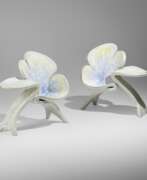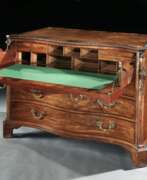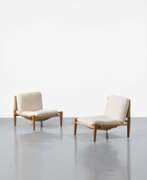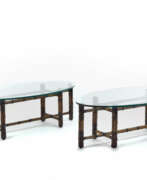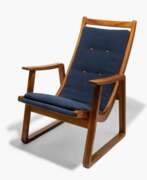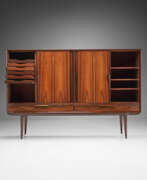Furniture designer


Charles Ormond Eames Jr. was an American designer, architect and filmmaker. In professional partnership with his spouse Ray Kaiser Eames, he was responsible for groundbreaking contributions in the field of architecture, furniture design, industrial design, manufacturing and the photographic arts.


Ray-Bernice Alexandra Eames was an American artist and designer who worked in a variety of media.
In creative partnership with her husband Charles Eames and The Eames Office, she was responsible for groundbreaking contributions in the fields of architecture, graphic design, textile design, film, and furniture. The Eames Office is most famous for its furniture, which is still being made today. Together, the Eameses are considered one of the most influential creative forces of the twentieth century.
During her lifetime, Ray Kaiser Eames was given notably less credit than she has been given posthumously in art and design literature, museum shows, and documentaries.


Emile Gallé was a French artist and designer who worked in glass, and is considered to be one of the major innovators in the French Art Nouveau movement. He was noted for his designs of Art Nouveau glass art and Art Nouveau furniture, and was a founder of the École de Nancy or Nancy School, a movement of design in the city of Nancy, France.


Arne Emil Jacobsen is a Danish architect and designer, the founder of the Danish Functionalism style.
He studied at the School of Architecture at the Royal Danish Academy of Fine Arts, and began working as an architect in the 1930s. Inspired by Art Nouveau, he designed several public buildings, including the Aarhus City Hall. In collaboration with Flemming Lassen, he first created a comprehensive overall interior design, including furniture, fixtures, plumbing and other details. After World War II, Arne Jacobsen made a name for himself both in Denmark and around the world.
For six decades, Arne Jacobsen was at the forefront of Danish architecture, creating visionary works of architecture that still look contemporary today. His projects often included both the building itself and the overall interior design as well as the design of the surrounding landscape. The combination of architecture and design is one of the constant characteristics of Arne Jacobsen's work. In projects such as the SAS Royal Hotel (1960) and St. Catherine's College in Oxford (1964), he not only created the architecture, but also designed every detail of the interiors, turning them into a true work of art.
In addition to architectural structures, Arne Jacobsen created a number of highly original chairs and other furniture. From his studio came avant-garde and innovative furniture, lamps, patterns, clocks, cutlery and glassware that are still in demand today.


Gaetano Pesce is an Italian architect and a design pioneer of the 20th century. Pesce was born in La Spezia in 1939, and he grew up in Padua and Florence. During his 50-year career, Pesce has worked as an architect, urban planner, and industrial designer. His outlook is considered broad and humanistic, and his work is characterized by an inventive use of color and materials, asserting connections between the individual and society, through art, architecture, and design to reappraise mid-twentieth-century modern life.


André Sornay was a French designer and decorator, lauded for his innovative contributions to the Art Deco movement. Born on January 28, 1902, in Lyon, he was a visionary who transformed his family's traditional furniture business into a bastion of modern design. Sornay's commitment to geometric stylization and the rationalization of furniture production made his pieces timeless yet revolutionary.
Educated at Lyon's esteemed School of Fine Arts, Sornay's furniture designs are characterized by clean, modern lines and detailed with his signature brass cloutage. His works, including the distinguished bookcases from the 1930s, exemplify the seamless blend of functionality and aesthetic appeal. Rather than following the trend to move to Paris, Sornay chose to remain in Lyon, fostering a unique identity in the design world.
Collectors and experts in art and antiques revere Sornay's furniture for its elegance and historical value. His pieces are not only functional but also serve as a testament to the Art Deco era's stylistic innovation. To discover more about André Sornay's legacy and to receive updates on available pieces, sign up for our exclusive newsletter.










